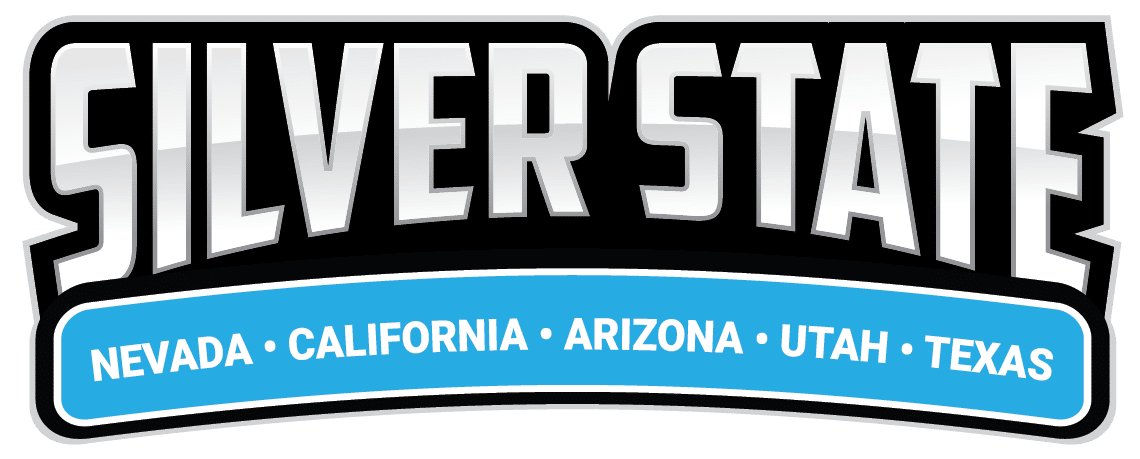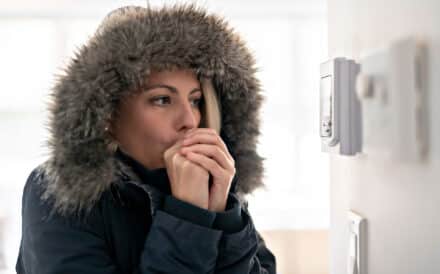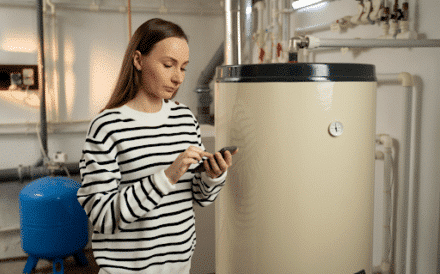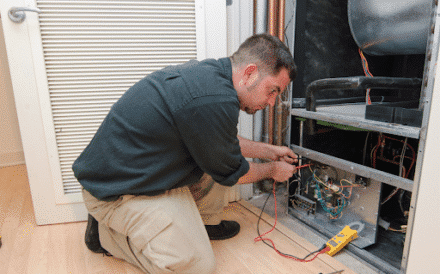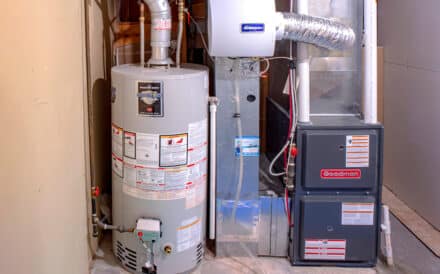Furnace Not Performing? Three Reasons Your Heating System Is Blowing Cold Air
Maybe you’ve been running errands in the cold weather, or taking the dog for a walk on a chilly morning. Your cheeks are rosy, your fingers are cold, and all you can think about is getting back to your warm, cozy home. But when you finally step inside and feel cold air coming from your vents, you’re denied that satisfaction.
When your furnace is blowing cold air instead of providing that warm hug you so desperately wanted, it’s time for residential furnace repair. A heating unit that isn’t working correctly can disrupt your comfort and lead to more serious issues, like a complete system breakdown, poor indoor air quality, and frozen pipes.
From simple fixes you can handle yourself to situations that call for professional residential furnace repair, here are the three most common reasons your furnace is blowing cold air and how to resolve them.
1. Thermostat Issues
When your furnace is blowing cold air, your first step to check is your thermostat. It may seem obvious, but the thermostat is actually a common culprit of heating issues. Fortunately, it’s usually an easy problem to rectify.
What’s Causing It?
- Incorrect settings: Check your thermostat! It might be accidentally set to “cool” or “fan” instead of being on “heat” mode.
- Fan set to “on” instead of “auto:” If your thermostat’s fan setting is set to “on,” the blower will continuously run, even when the furnace isn’t producing any heat, resulting in cold air circulation between heating cycles.
- Faulty wiring: Loose or damaged wiring between your thermostat and furnace can disrupt communication and prevent heating cycles from initiating.
- Battery issues: Low battery power in digital thermostats can cause incomplete cycles or the system to not function properly.
- Poor placement: If your thermostat is located near drafts, in direct sunlight, or near heat-generating appliances, it may misread the actual room temperature.
- Calibration errors: Over time, thermostats can become miscalibrated—especially between seasons—and therefore aren’t reading room temperatures correctly.
How to Address It
- Check your settings: Ensure your thermostat is set to “heat” and that the temperature setting is at least 3-5 degrees above the current room temperature.
- Verify the fan setting: Make sure the fan is set to “auto” rather than “on” to prevent cold air circulation between heating cycles.
- Inspect wiring: A residential furnace repair professional can remove your thermostat cover to look for (and address) any loose, frayed, or disconnected wires.
- Replace batteries: Have a battery-powered thermostat? Swap out the old batteries for some new ones and test your system again to see if this resolves the issue.
- Clean your thermostat: Regular maintenance is always important. Gently remove any dust that has accumulated inside the thermostat with a soft brush or compressed air. If you’re worried about tackling it alone, a reputable technician can clear dust or debris during their residential furnace repair visit.
- Consider an upgrade: If you have an older thermostat, consider upgrading to a programmable or smart model. Doing so could help improve heating efficiency and resolve temperature regulation issues.
2. Dirty or Clogged Filters
One of the most common reasons behind a furnace blowing cold air is something surprisingly simple: a dirty or clogged air filter. This often-overlooked maintenance task can have a major impact on your unit’s performance. Let’s explore why this happens and how residential furnace repair can help.
What’s Causing It?
- Accumulated dust and debris: Over time, your filter traps airborne particles like dust, pet dander, and pollen, gradually restricting airflow to your furnace.
- Extended use without replacement: Using the same filter beyond its recommended lifespan (typically 1-3 months for standard filters) will wind up exacerbating the issue of blocked airways.
- High-particle environments: If you’re in a home with pets, smokers, or ongoing construction, your filter needs to be changed more frequently because of the extra particles in the air.
- Incorrect filter size or type: Using the wrong filter size or a filter with too high of a MERV rating for your system can also drastically restrict airflow, putting strain on your furnace.
- Overheating: When filters become clogged, your furnace has to work harder to pull air through the system. This extra effort can cause the heat exchanger to overheat, triggering safety features that shut down the heating elements—a common issue that residential furnace repair technicians deal with regularly. The result? Your furnace blows cold air instead of warm, even though the blower motor continues to run.
How to Address It
- Locate your filter: Find your furnace filter, which is typically found in the return air duct or within the furnace itself, and carefully remove it for inspection.
- Check for dirt buildup: If the filter appears gray, dark, or has visible debris buildup, you should immediately swap it out for a clean filter.
- Replace with correct size: When installing a new filter, make sure it’s the correct size and type for your system, and pay attention to any directional markings on the filter frame to ensure proper airflow.
- Set a replacement schedule: Mark your calendar or set a phone reminder to check filters monthly during heavy-use seasons like winter. Remember that regular filter maintenance extends the life of your furnace and improves your home’s air quality.
- Consider filter quality: Standard filters typically need replacement every 1-3 months, while higher-quality pleated filters might last 3-6 months.
- Wait for reset: After replacing the filter, be aware that your furnace’s limit switch may need time to reset once the system cools down. If your furnace doesn’t restart on its own, or if it continues to blow cold air after filter replacement, you should call a residential furnace repair professional.
3. Malfunctioning Components
Sometimes, cold air is a product of malfunctioning components inside your system. These problems typically require professional diagnosis and residential furnace repair, as they involve specialized knowledge and safety considerations.
What’s Causing It?
- Ignition system failures: Unlike older systems with pilot lights, modern furnaces use electronic ignition systems that may fail to light the burners properly, causing cold air to circulate.
- Flame sensor issues: When a flame sensor becomes dirty or faulty, it can shut off the gas supply as a safety precaution, which will prevent air from heating up.
- Broken or worn blower motor: The motor responsible for circulating air throughout your home might be failing, causing insufficient airflow or an inability to distribute heated air effectively.
- Gas supply problems: Interruptions in gas service or issues with the gas valve can prevent your furnace from operating correctly.
- Cracked heat exchanger: This is a serious issue that can lead to carbon monoxide leaks, and it’ll require immediate attention by a residential furnace repair expert.
- Failed limit switch: The limit switch monitors internal temperature. If it malfunctions, it can trigger safety shutdowns that interrupt normal heating cycles.
- Condensate drain blockages: In high-efficiency furnaces, blocked condensate lines can trigger safety switches that prevent operation and lead to cold air issues.
- Electronic control board issues: This is like the brain of modern furnaces—it can sometimes glitch or fail completely.
How to Address It
- Check for error codes: Many units have diagnostic lights that blink in patterns to indicate a specific problem. Check your owner’s manual to see what these signals mean.
- Reset the furnace: Sometimes a simple reset can resolve electronic issues—try turning off the power to the furnace, waiting a few minutes, and then turning it back on to reset the electronic controls.
- Inspect the flame sensor: For those comfortable with basic furnace maintenance, inspecting the flame sensor might help. If you can locate this component (usually a metal rod near the burners), you might be able to gently clean it with fine sandpaper or steel wool to remove any buildup that’s affecting it.
- Check for water around the unit: Standing water near a high-efficiency furnace could indicate a condensate drain blockage.
- Listen for unusual noises: If you hear any grinding, squealing, or rattling noises, it can indicate mechanical failures. If you hear these sounds, it’s best to shut your furnace off and call for residential furnace repair rather than risk further damage.
Need Professional Help? We’ve Got Your Back
For safety reasons, always turn off the power to your furnace before attempting to inspect any parts, and never attempt to repair gas-related components yourself. Carbon monoxide leaks from improperly serviced gas furnaces pose serious health risks, so when in doubt, contact Silver State for professional residential furnace repair. Our certified technicians have the training and tools to safely diagnose and fix complex furnace issues, restoring your home’s comfort quickly and effectively. Hit the “Book Now” button at the top of the screen to schedule your appointment today.
